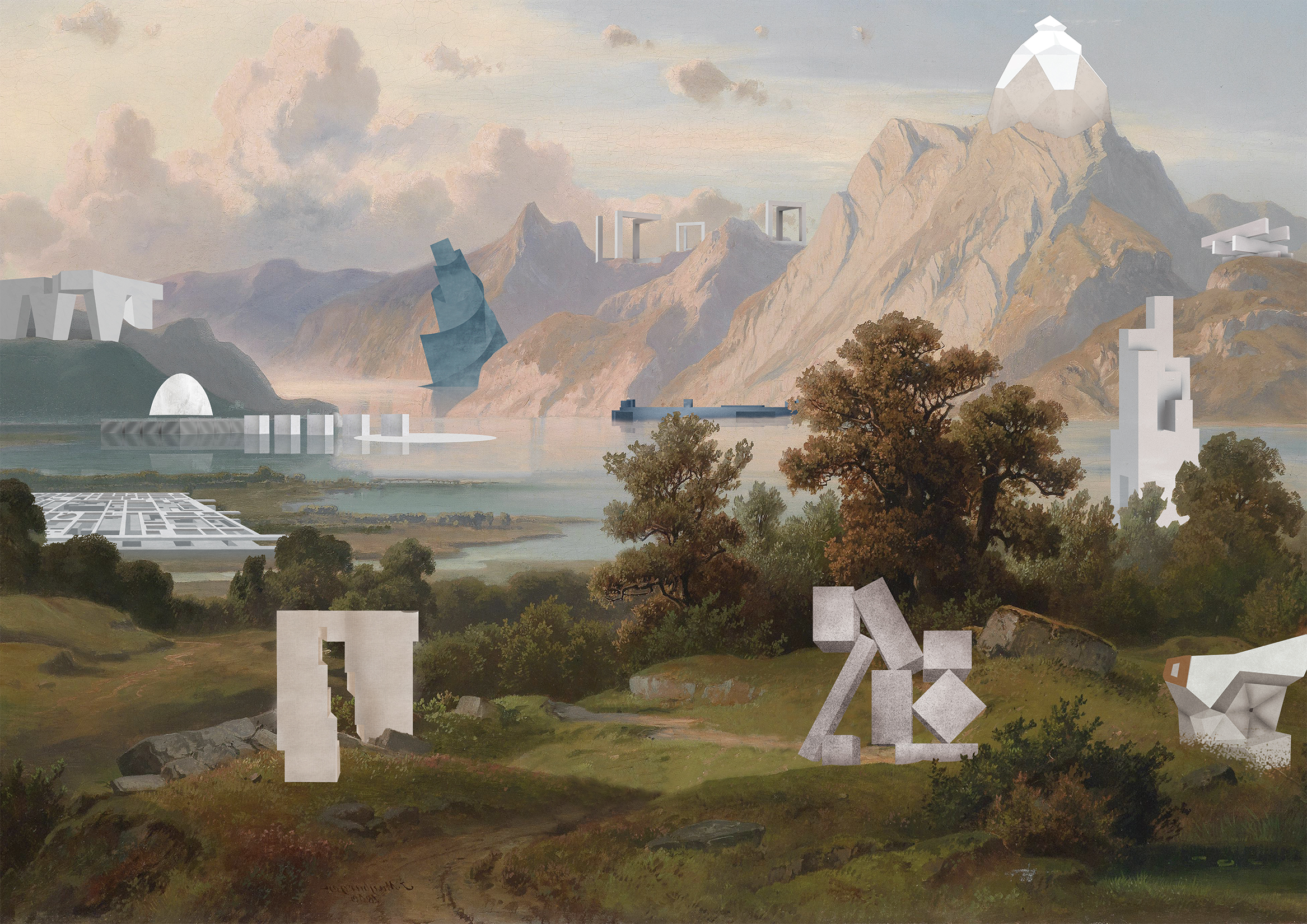HARDCORIST LECTORES
& their worldmaking laboratoriesCruz Garcia & Nathalie Frankowski
WAI Architecture Think Tank
Zhi Tao Chen
Takumi Davis
Vincent DeRienzo
Christoph Eckrich
Cassie Howard
Taylor Latimer
Kelly Lu
Tyng Peck
Swetha Tulluri
Crystal Xue
Kai Zhang
Selena Zhen
See Studio Syllabus PDF

The only purpose of education is to make new worlds
collectively. This requires the practice of curiosity as a daily habit and the exercise
of dignified and purposeful rebelliousness. Other worlds are possible.
-Post Novis Manifesto
In a drive for human emancipation, the last hundred years witnessed the creation of various avant-garde schools, workshops, and laboratories that strived to blur the boundary between art, architecture and life. Starting with the People’s Art School in Vitebsk in 1918, and followed by the Bauhaus(1919), Unovis (1919), Vhkutemas (1920), GINKhUK (1923) and Black Mountain College (1933), a century of turmoil paved the way to a series of transcendental institutions set to liberate architecture from the constraints of previous epochs.
A hundred years after the foundation of Unovis, Bauhaus and Vhkutemas, ‘HARDCORIST LECTORES AND THEIR WORLDMAKING LABORATORIES’ reconsiders the relationship between pure form, radical pedagogy, and the creation of spaces for the exploration and development of critical forms of architecture. HARDCORIST LECTORES AND THEIR WORLDMAKING LABORATORIES’ explores the possibility of Universal Workshops and Architectures of Emancipation.
If a theory is critical inasmuch as it seeks for forms of human emancipation, critical architecture employs its mediums, strategies, methods, concepts, narratives, spaces and forms to liberate humans from the pressing challenges of our times. In the midst of environmental decay to the point of no return, with the asphyxiating grip of neoliberal capitalism, and the crushing socio-economic effects of the Anthropocene, the gospel of the Cubo-Futurist Opera Victory Over the Sun seems not so distant after all.
‘HARDCORIST LECTORES AND THEIR WORLDMAKING LABORATORIES’ reconsiders the relationship between radical form and radical program, as buildings become inseparable from the activities, programs and manifestoes they host.
Divided in two main parts, the studio will go from pure research, while designing multimedia installations (drawings, storyboards, film, collages, and models) not only the buildings and the relationship to their surrounding landscapes, but the stories of these WORLDMAKING LABORATORIES FOR HARDCORIST LECTORES.
-Post Novis Manifesto
Manifesto
In a drive for human emancipation, the last hundred years witnessed the creation of various avant-garde schools, workshops, and laboratories that strived to blur the boundary between art, architecture and life. Starting with the People’s Art School in Vitebsk in 1918, and followed by the Bauhaus(1919), Unovis (1919), Vhkutemas (1920), GINKhUK (1923) and Black Mountain College (1933), a century of turmoil paved the way to a series of transcendental institutions set to liberate architecture from the constraints of previous epochs.
A hundred years after the foundation of Unovis, Bauhaus and Vhkutemas, ‘HARDCORIST LECTORES AND THEIR WORLDMAKING LABORATORIES’ reconsiders the relationship between pure form, radical pedagogy, and the creation of spaces for the exploration and development of critical forms of architecture. HARDCORIST LECTORES AND THEIR WORLDMAKING LABORATORIES’ explores the possibility of Universal Workshops and Architectures of Emancipation.
If a theory is critical inasmuch as it seeks for forms of human emancipation, critical architecture employs its mediums, strategies, methods, concepts, narratives, spaces and forms to liberate humans from the pressing challenges of our times. In the midst of environmental decay to the point of no return, with the asphyxiating grip of neoliberal capitalism, and the crushing socio-economic effects of the Anthropocene, the gospel of the Cubo-Futurist Opera Victory Over the Sun seems not so distant after all.
‘HARDCORIST LECTORES AND THEIR WORLDMAKING LABORATORIES’ reconsiders the relationship between radical form and radical program, as buildings become inseparable from the activities, programs and manifestoes they host.
Divided in two main parts, the studio will go from pure research, while designing multimedia installations (drawings, storyboards, film, collages, and models) not only the buildings and the relationship to their surrounding landscapes, but the stories of these WORLDMAKING LABORATORIES FOR HARDCORIST LECTORES.
Weimar 1919
In 1919 Walter Gropius published the manifesto and program of the Staatliche Bauhaus. A new, radical school of design and art founded during the beginning of the Weimar Republic. With one of the most transcendental curriculums, the school also confronted the constraints of old world orders.
Vitebsk 1919
In 1919, the year the Bauhaus was founded, a laboratory to blur with architecture the line between art and life was formed inside the People’s Art School in the small town of Vitebsk. While already in 1918 Marc Chagall had founded the school in what is now known as Belarus, it was the following year that Vera Ermolaeva (who will become the school’s Director in 1920) invited Kazimir Malevich to join from Moscow. Founded by Malevich and with Lazar Khidekel, El Lissitzky, Ilia Chasnik, Nina Kogan, and Ermolaeva among its ranks, UNOVIS (an abbreviation of Utverditeli novogo iskusstva - Champions of the New Art) became one of the first experiments of collective cultural production, developing a collective idea of architecture searching for ways to transform the world.
Puerto Rico 1919
A century ago (1919) in the US colony of Puerto Rico, a group of tobacco workers, organized in anarchist syndicates, creating a radical alternative practice of education. That practice grew international networks like tentacles over the map of the Americas, from San Juan to New York, from Ybor City and Durham to La Habana and Santo Domingo, giving birth to what some historians call the most enlightened proletariat force in the continent. The practice was simple. While tobacco workers engaged in the boring labor of rolling cigars, they would hire one of their own who knew how to read, to read for them during the entire work-day. As the practice of loud-reading grew, the lectores (loud-readers) will become traveling performers with an international audience, creating networks of solidarity all around the Caribbean as well as a massive, shared and open access oral library to workers who were denied any other form of formal education. The books that the lectores read for the workers were mostly books of philosophy or literature that shared an anti-capitalist imagination. The tobacco workers, then, turned the mind-numbing quality of their repetitive manual work of rolling cigars into an advantage, using the same space and tools of their capitalist exploitation to create an anti-capitalist underground culture.
 Porto Puerto Rico -- Raising tobacco under Cheese Cloth
Porto Puerto Rico -- Raising tobacco under Cheese Cloth Key West Lector: A lector reads a newspaper to workers in a Key West, Florida cigar factory. 1930.
Key West Lector: A lector reads a newspaper to workers in a Key West, Florida cigar factory. 1930. “Trouserettes the Latest in Gotham”: Luisa Capetillo’s (Puerto Rican Changemaker) fashion was all the rage in the streets of New York City.
“Trouserettes the Latest in Gotham”: Luisa Capetillo’s (Puerto Rican Changemaker) fashion was all the rage in the streets of New York City.
Tobacco Lectores, WAI Architecture Think Tank
Worldmaking Laboratories
A hundred years after the foundation of the Bauhaus, and the formation of UNOVIS, a new collective questions the state of academia and wonders if the lectores can exist in Architecture. After all, hasn’t architecture been turned into a form of alienating work for most? Aren’t potential visionaries kept away from controlling their means of production? Aren’t the endless hours of uninspiring architectural labor a form of rolling cigars for the plantation owners?
HARDCORIST LECTORES presents the mechanisms, actions and projects that carry out the design of WORLDMAKING LABORATORIES and their program in its effort to disconnect itself from the commodification of architecture (practice and education). Relying on a system of alternative institutions across the world (within the tropical forests in the Caribbean, old industrial buildings in Asia, and the cornfields, and factories in the American post-industrial landscapes HARDCORIST LECTORES reveals the properties of its camouflaging buildings, the critical nature of its, non-objective, feminist, eco-visionary and post-colonial curriculum and the combative characteristics of its architectural projects carried out by teachers and students in their fluctuating roles. In the WORLDMAKING LABORATORIES all the students are the teacher!
Narrative Architecture and
Hardcorism
This studio uses a mixture of Narrative Architecture and Hardcorism as its theoretical framework. Narrative Architecture is a form of architecture that through a mixture of narrative texts and a vast repertoire of images (collages, photomontages, drawings, storyboards, comic strips, animations), creates allegorical stories to explore the potential of architecture, urbanism and their effect in the environment. Hardcorism aims to reveal the potential of architecture as pure geometric form.
The studio focuses on advanced tools of research, development and representation, recognizing that there is no architecture without the stories that originate and occupy it. An architecture without narrative is an architecture without self-awareness and criticism. Narrative Architecture invites to raise critical questions challenging our way of understanding the potential and limitations of architecture. In order to address Narrative Architecture, the studio proposes to rethink the history and potential of modernisms and the avant-garde from an alternative point of view. The subjects of study oscillate from the pure forms developed by Malevich, Leonidov, El Lissiztky, Vera Ermolaeva, Lyubov Popoa, Lazar Khidekel, Buckminster Fuller, Iza Genzken, to the philosophical positions of Donna Haraway, Achille Mbembe, Ana Lydia Vega, Luisa Capetillo, Sayak Valeincia and Boris Groys.
 Left: Ilia Chashnik and El Lissitzky, Project for a Tribune in Smolensk, 1920. Right: El Lissitzky, Lenin Tribune, 1924.
Left: Ilia Chashnik and El Lissitzky, Project for a Tribune in Smolensk, 1920. Right: El Lissitzky, Lenin Tribune, 1924.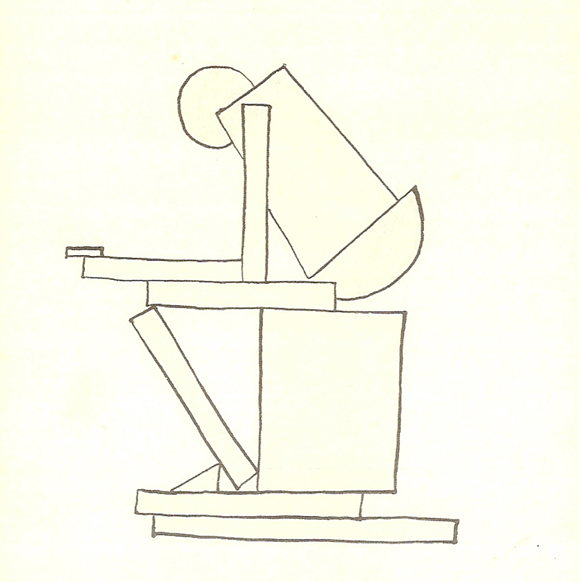
David Yakerson, SupremaMAN, 1920
Site
The project reclaims the former naval base Roosevelt Roads in Ceiba Puerto Rico.
STUDIO STRUCTURE
Part I
HARDCORISMONTOLOGY OF FORMS
Exercise 1: Hardcorist Archetypes
Students will create drawings, a series of artifacts (concrete and plaster models), and images of archetypes identified in the first part of the project. These architectures will serve as the spaces to be occupied by new emancipating programs.
Exercise 2: Campus
Students will design a campus after identifying pressing challenges drawn from philosophy, literature, fiction, film, and art to outline scenarios of historical and unprecedented urgency. Pure form will be summoned to construct landscape stories at the intersection of: Automation / AI / Robotics, Deforestation, Mass Extinction, Spoliation of the Earth, Energy Geopolitics, Food Production, Labour Rights and Conditions,Information and Communication Control. Students will implement planning strategies, landscape architecture, and social condensers via outdoor spaces, trees, furniture, and pedagogical programs beyond the boundaries of buildings. A large scale collective physical model will present the program of the Campus of Loudreaders.
Part II
NARRATIVEONTOLOGY OF POWER
Exercise 1: Laboratories for Loudreaders
The second part of the project consists on the architectural embodiment of the pedagogical programs developed in the lanscapes of the campus. A series of buildings will act as extensions of the landscapes, and the landscapes will project the ambitions of the buildings and its pedagogical program. Strategies of land transformation will be altered, re-appropriated, transformed, integrated, hybridized, mixed and collaged in order to construct Critical Laboratories for an architecture of emancipation.
Exercise 2: Narrative Architecture
Through publications, videos, drawings, text, still, and moving images, students will construct critical narratives dealing with their pedagogies. Each of the Narrative storyboards will address different scenarios of emancipation (nonobjective, post-capitalist and alternative economies, post-colonial, feminist, post-capitalist, radical ecologies).
Exercise 3: Exhibition and Publication
Students will design a website (loudreaders.org) to present the collective and individual strategies of each of the projects. The final part of the project consists on the presentation of the projects in a digital publication and exhibition.
Photos from Midreview
![]()
![]()
![]()
![]()
![]()
![]()
![]()
![]()
![]()
![]()
![]()

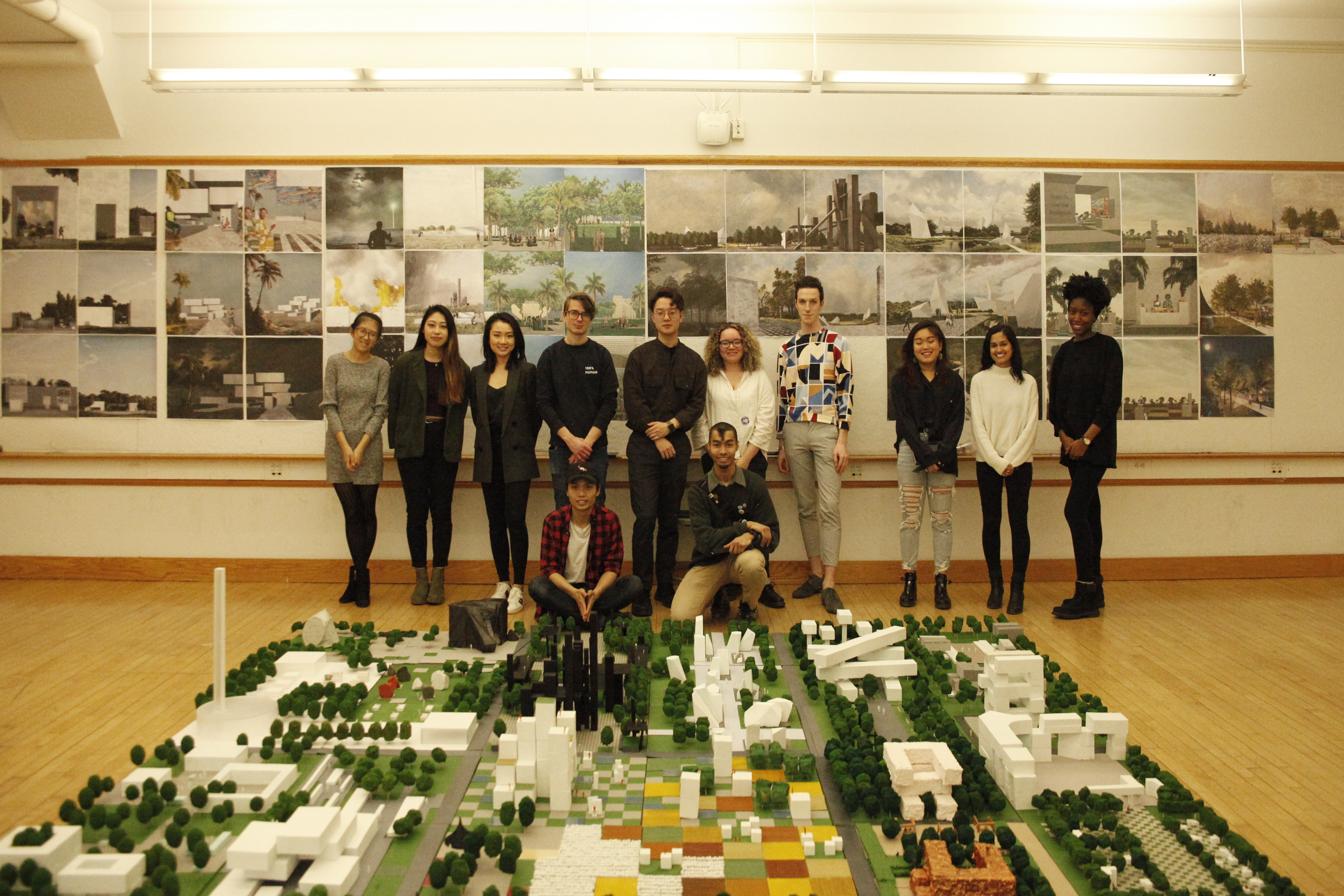
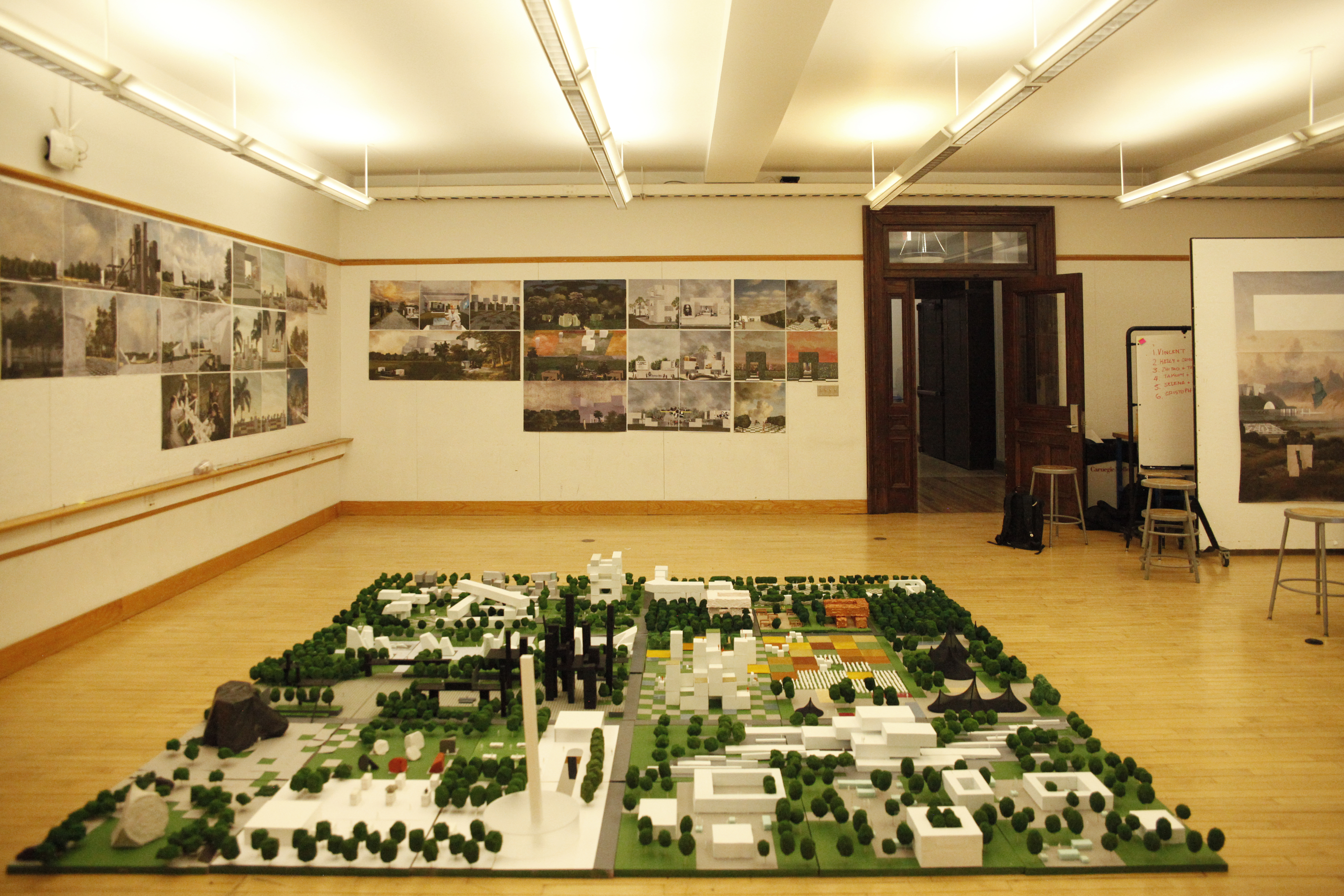
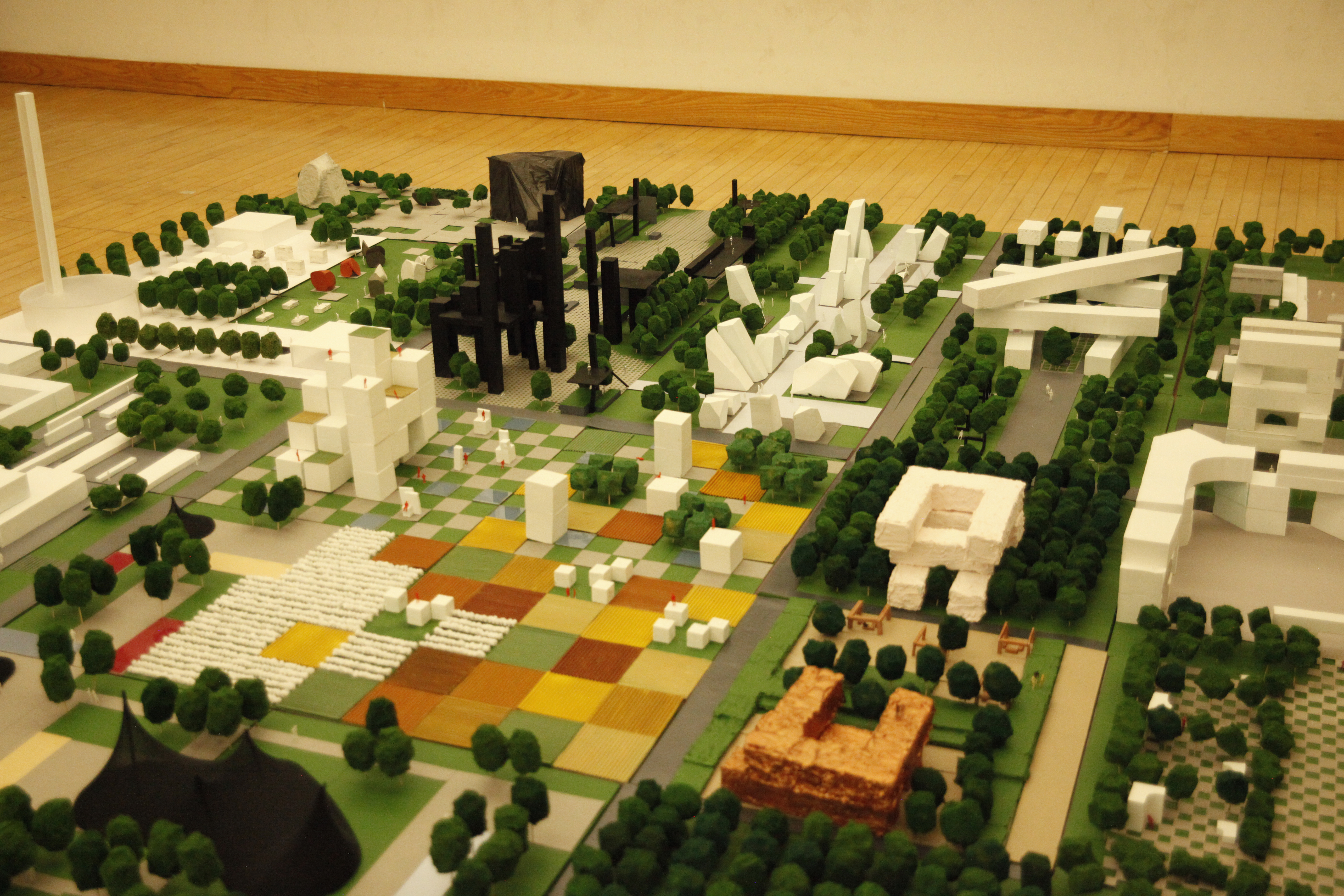


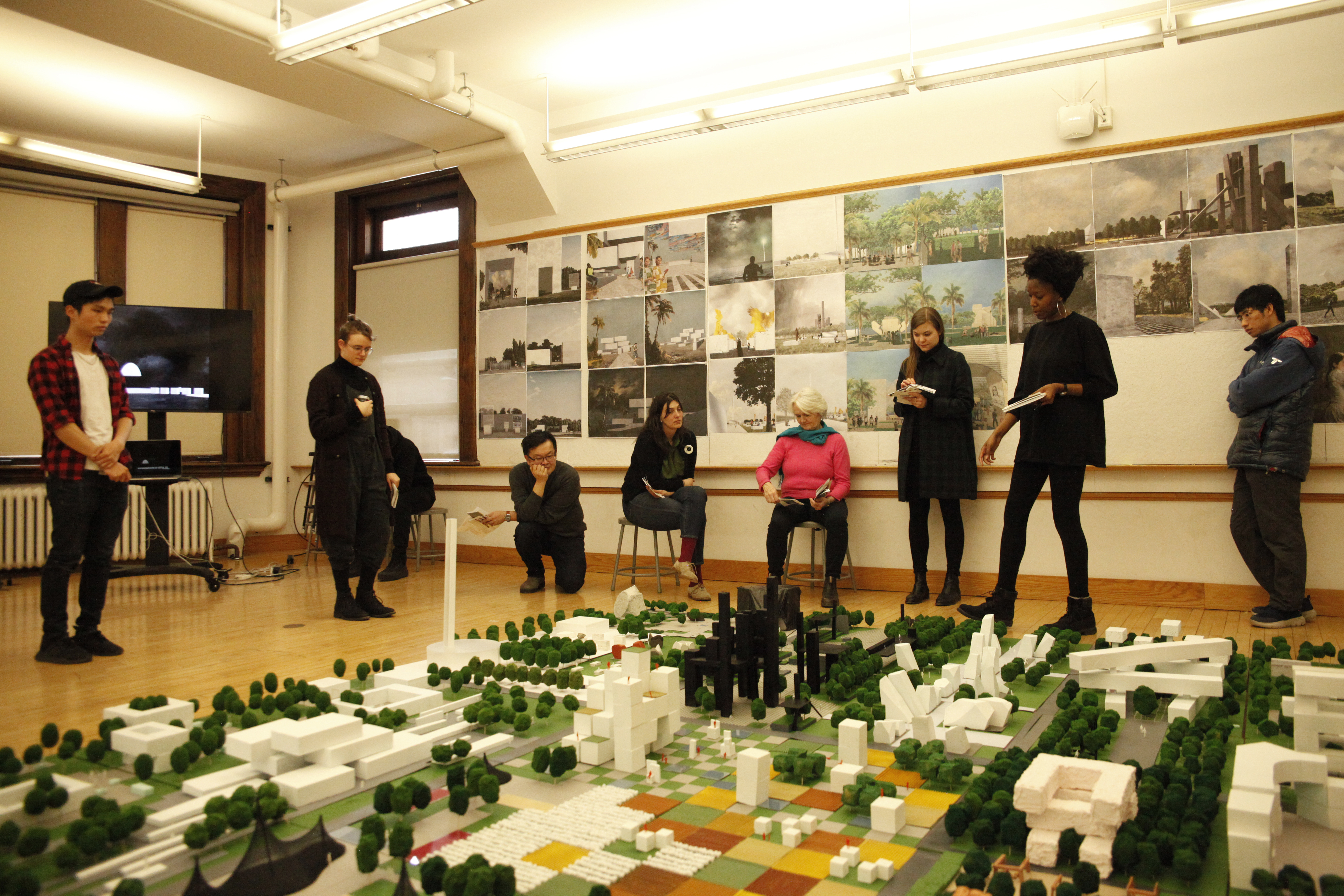
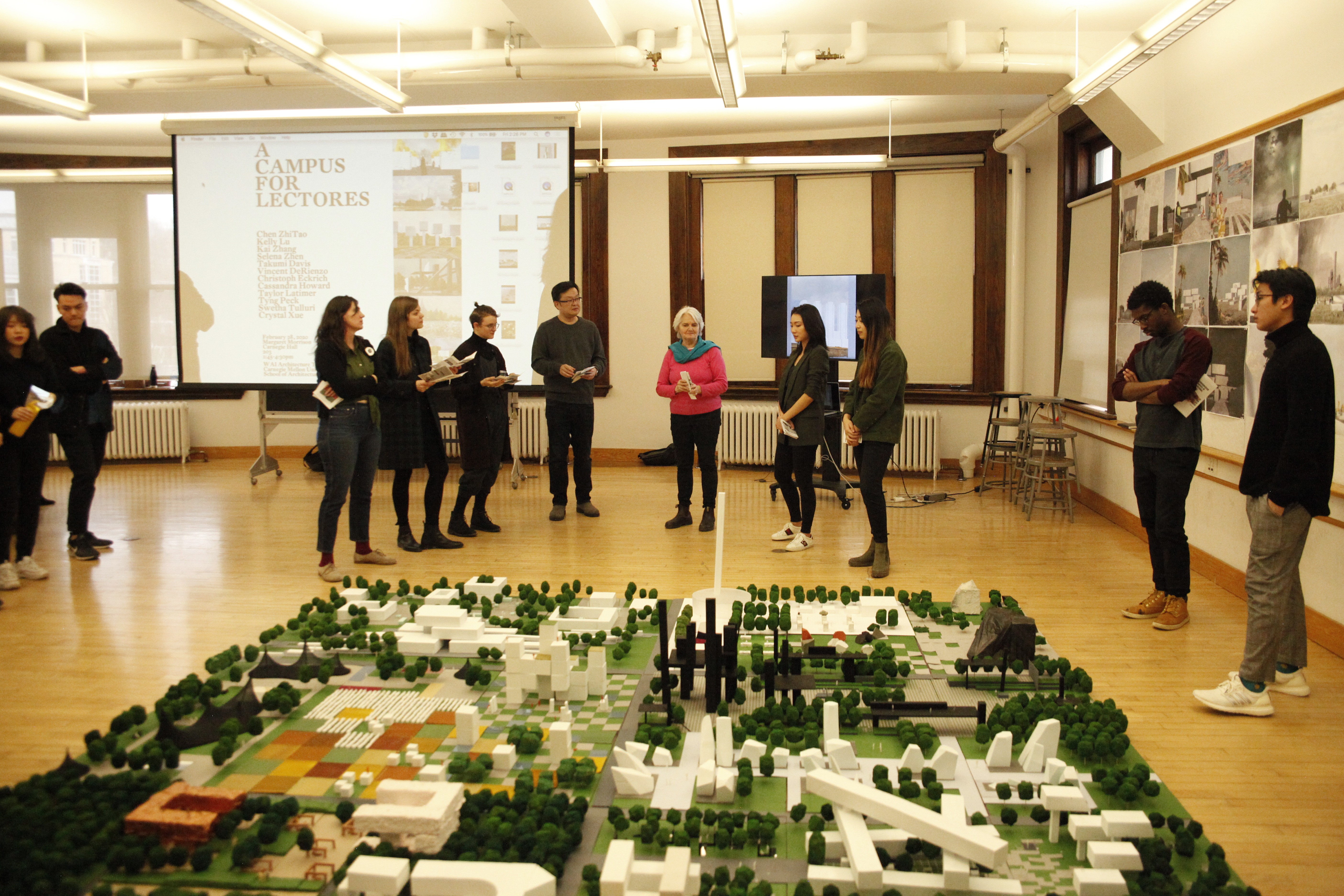
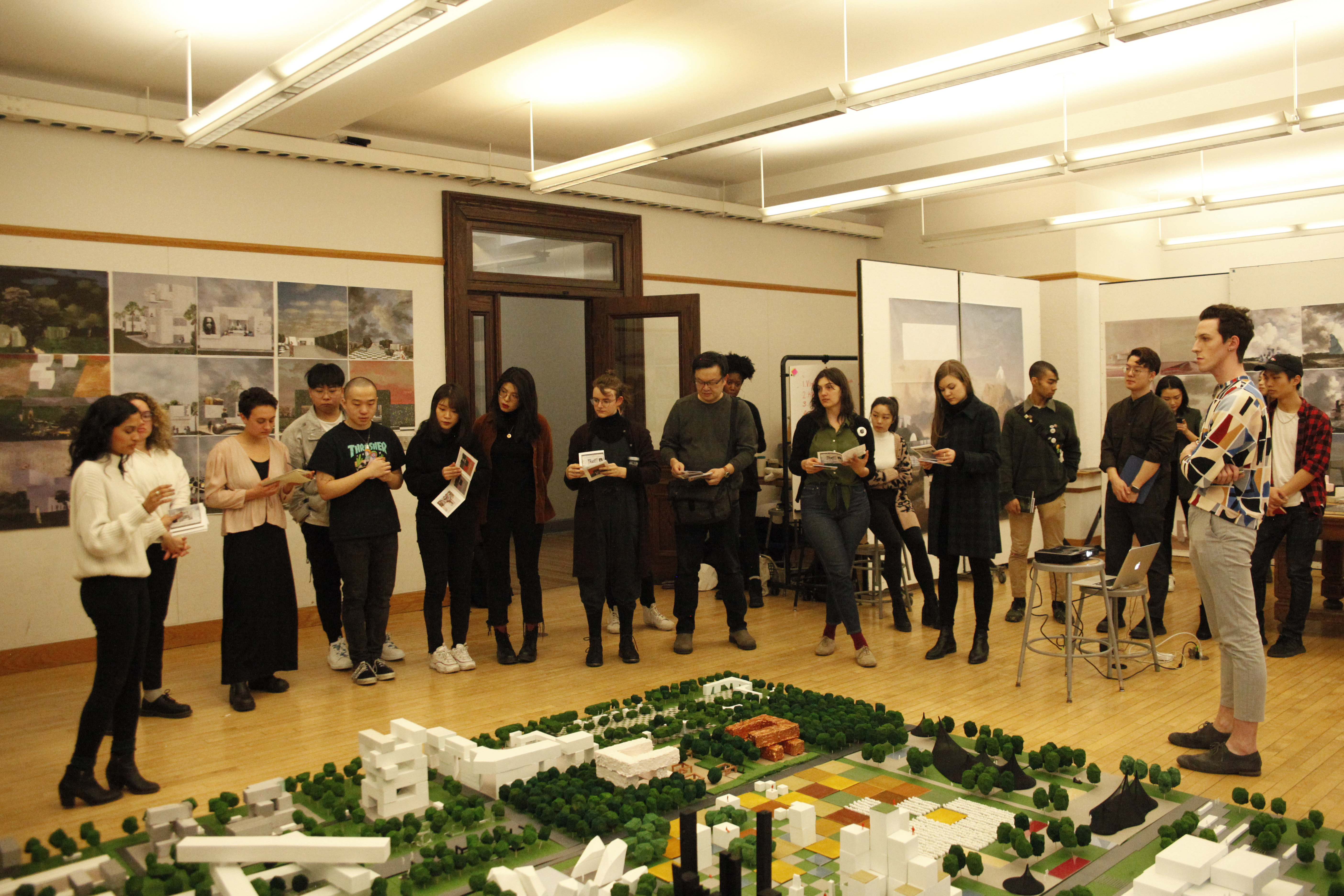
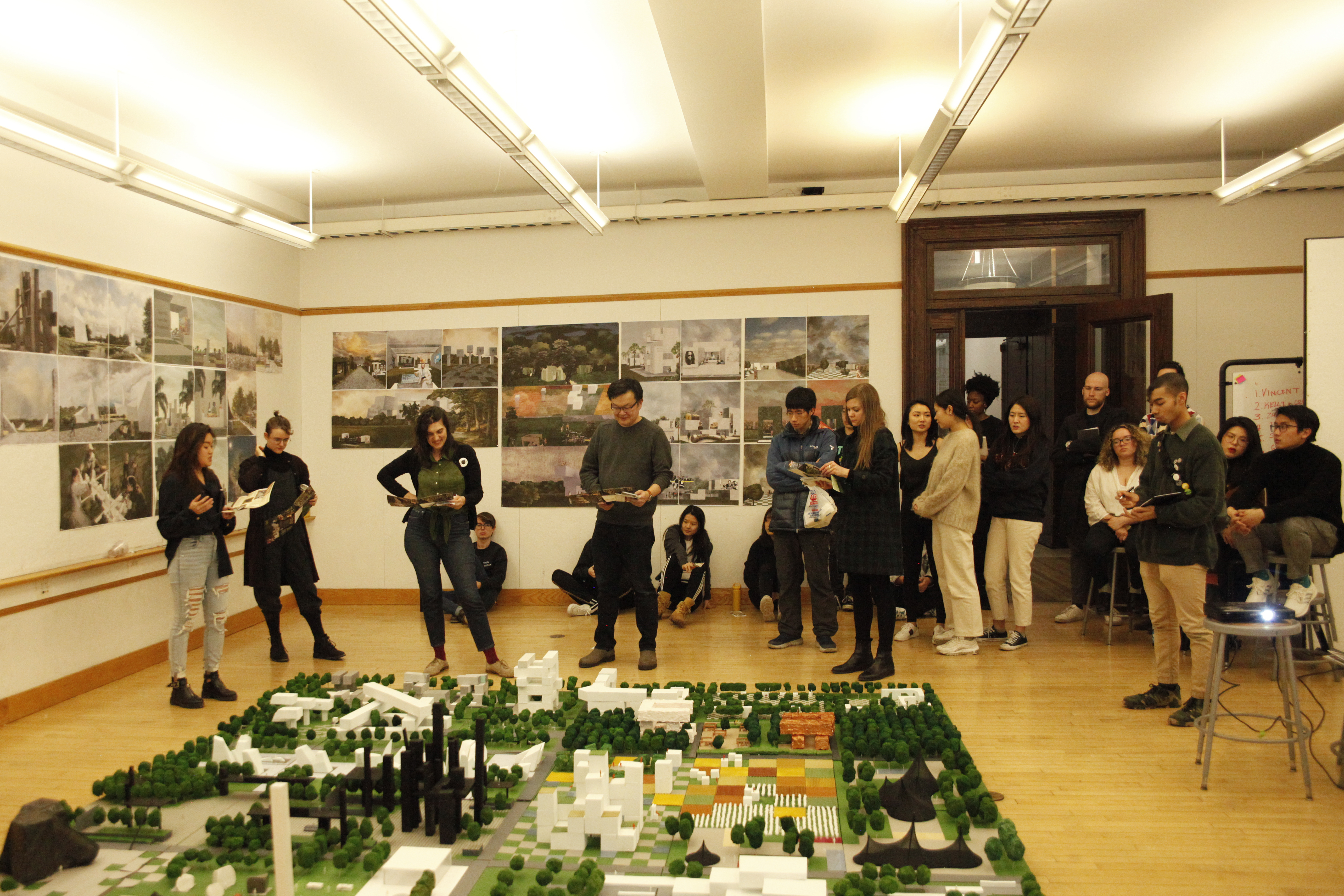
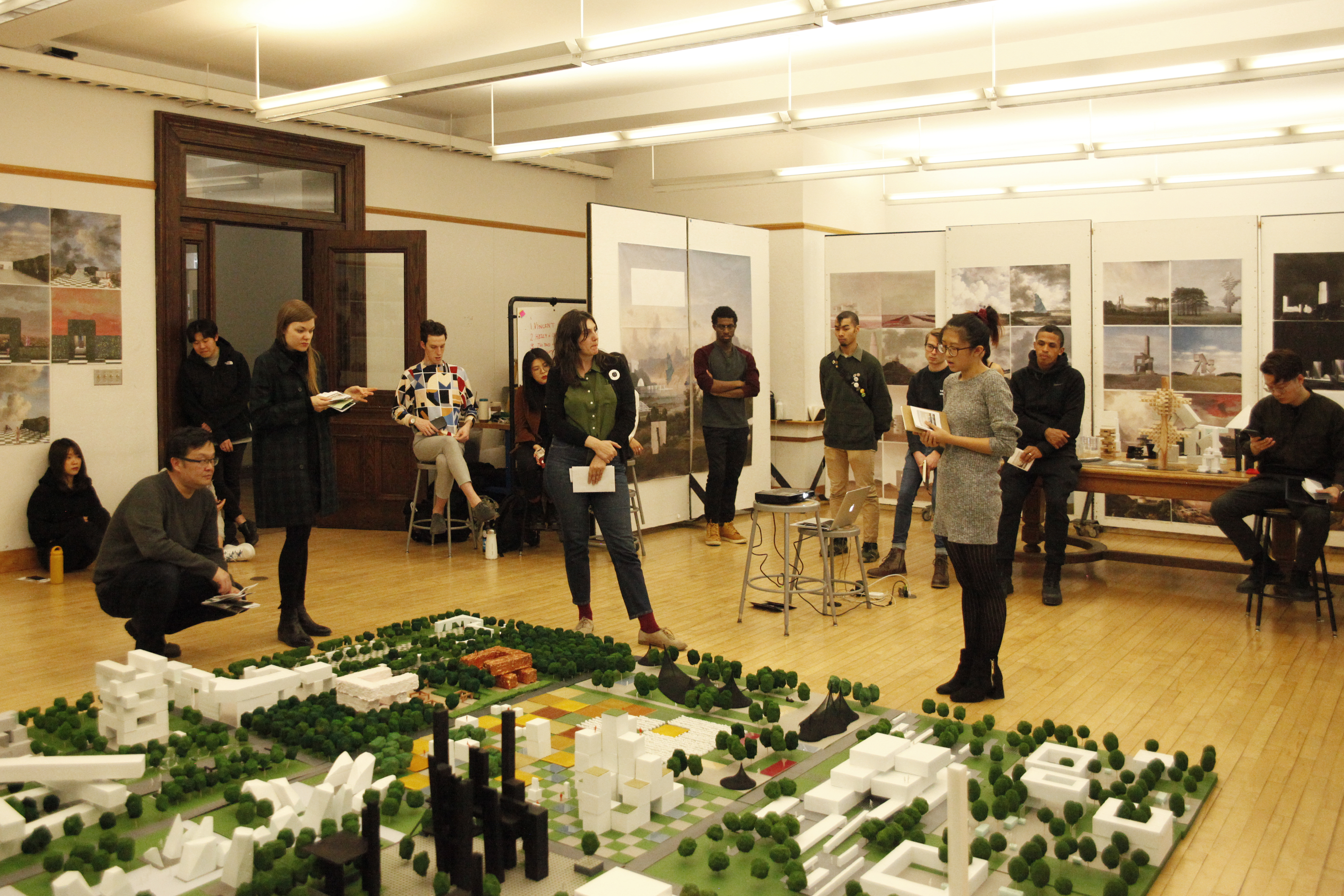
Archetype Research
